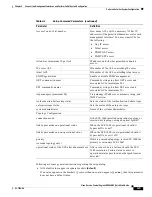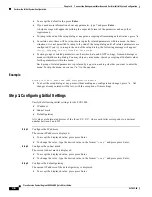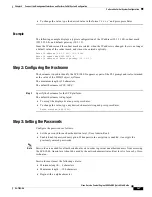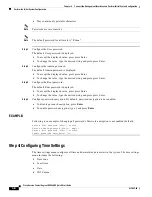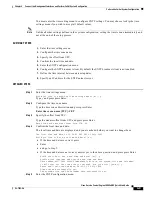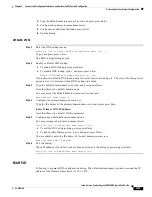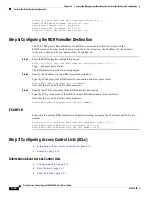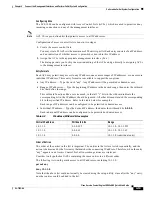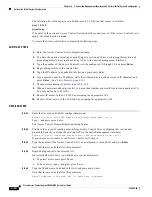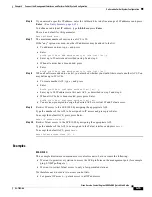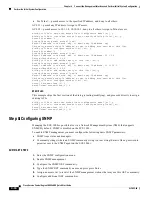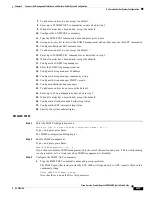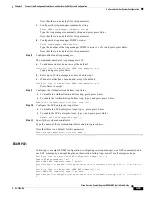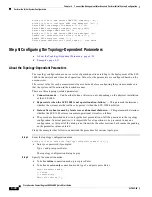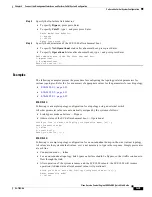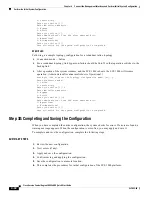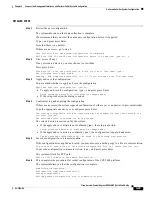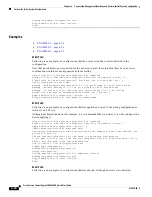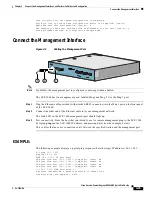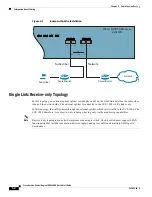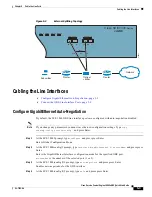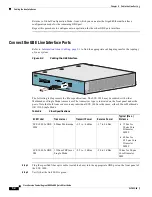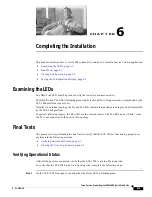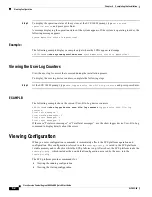
4-19
Cisco Service Control Engine 1000 2xGBE Quick Start Guide
OL-7822-06
Chapter 4 Connect the Management Interfaces and Perform Initial System Configuration
Perform the Initial System Configuration
Note that there is no default for this parameter.
c.
Configure the trap manager community string
Enter SNMP trap manager community string:
Type the trap manager community string and press press Enter.
Note that there is no default for this parameter.
d.
Configure the trap manager SNMP version.
Enter trap manager SNMP version:
Type the number of the trap manager SNMP version (1 or 2c) and press press Enter.
Note that there is no default for this parameter.
Step 8
Configure additional trap managers.
The maximum number of trap managers is 20.
a.
To add more entries do not accept the default:
Would you like to add another SNMP trap manager? [no]:
Type y and press press Enter.
b.
Enter up to 20 trap managers as described in step 7.
c.
When all entries have been added, accept the default:
Would you like to add another SNMP trap manager? [no]:
Press Enter to accept.
Step 9
Configure the Authentication Failure trap status.
•
To disable the Authentication Failure trap, press press Enter.
•
To enable the Authentication Failure trap, type y and press press Enter.
Enable the ‘Authentication Failure’ trap [no]:
Step 10
Configure the SCE enterprise trap status.
•
To disable the SCE enterprise traps, type
n
press press Enter.
•
To enable the SCE enterprise traps, type
y
and press press Enter.
Enable the SCE enterprise traps []:
Step 11
Specify the system administrator.
Type the name of the system administrator and press press Enter.
Note that there is no default for this parameter.
Enter system administrator contact name []:
EXAMPLE:
Following is a sample SNMP configuration, configuring one trap manager, one GET community, and
one SET community, and enabling the authentication failure trap, as well as all enterprise traps.
Would you like to enter the SNMP configuration menu? [no]: y
Enable SNMP management? [no]: y
Enter SNMP GET community name[]: public
Enter Access list number allowing access with this community string, use ‘0’ to allow all:
0
Would you like to add another SNMP GET community? [no]:
Enter SNMP SET community name[]: private
Enter Access list number allowing access with this community string, use ‘0’ to allow all:
2

